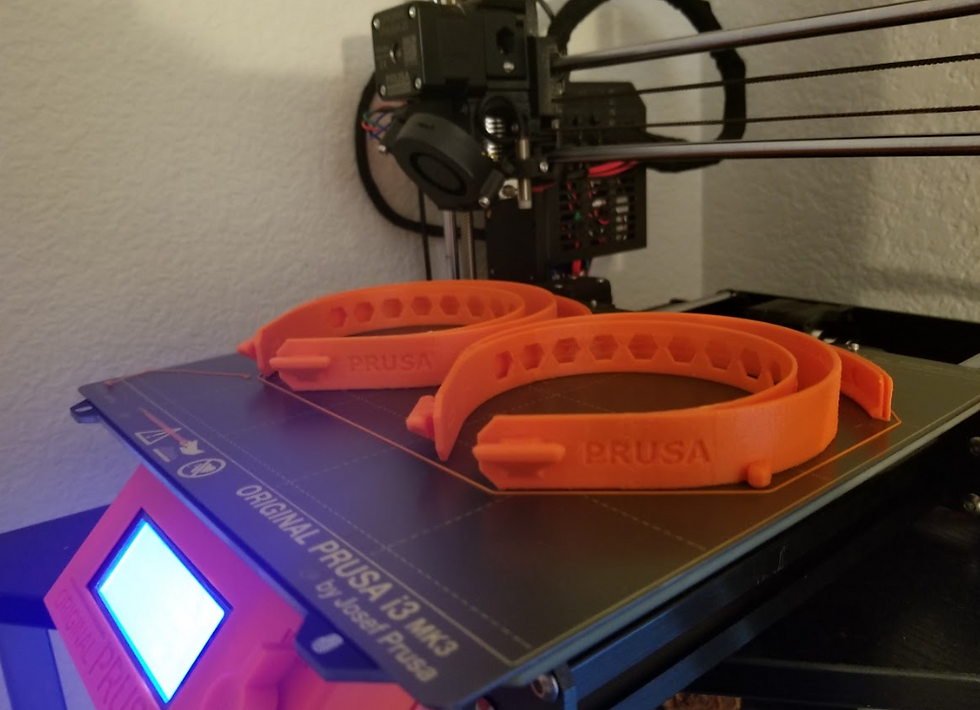The Future is CAD
- Milpitas Xtreme Robotics

- Jun 14, 2020
- 3 min read

In the past few years, technology has been advancing at an almost exponential rate. Never in the history of mankind have so many such advancements emerged in parallel and in combination, carrying so much impact. For example, the telephone was first invented by Graham Bell in 1876. These improved and over a period of time, humanity got smartphones which were invented in 1992. Then in just over a decade, relatively fast compared to the 116 years it took to create smartphones, apple released its iPhone in 2007. Now the world had the ability to not only call over long distances but also have access to information on their fingertips. This example shows the very fast pace of technology is increasing in a lot of fields.
One such technology that is now gaining popularity is 3D printing. First created in the mid-1980s to prototype projects very fast and make changes to them as needed, now it is
applied to a lot of other fields such as the medical and astronomy fields. New 3D printing technologies are emerging very fast and are capable of revolutionizing the robotics and manufacturing industry forever. For example, the SuperDraco engine that provides launch escape system and propulsive-landing thrust for the Dragon V2 passenger-carrying space capsule is fully 3D printed and is the first part in a rocket that is 3D printed. This SuperDraco was a part of the historical Falcon 9 Rocket Launch which was the first-ever commercially launched rocket and the first rocket to ever land back down on a pad. Parts of a rocket, like SuperDraco can take over a month to create by hand compared to a 3D printer which can print all the parts required for such an engine only 7 days. This example illustrates the power and potential of 3D printing. This is just one example but these technologies are also being used in many other fields such as the medical field to eliminate any human error in the process of making robots and other objects that are helpful in surgery.
3D printing is almost like the age of personalized computers and coding, and now just like that age, more and more people are buying their own personal 3D printer to print objects that can serve a multitude of purposes. But how does this matter to an average person? 3D printing can be used for big projects, however, it can also be used for small day to day tasks. For example, 3D printing was used by a lot of companies to make COVID-19 Face Shields for medical facilities. Many replicas could be created very fast by 3D printers. 3D technology can be also very useful to create items that are useful on a day to day basis, for example printing a door stopper, a pencil jar, door hangers, flower pots, and much much more. The only limit is the size of the printer and one’s imagination.
The important part about 3D printing is that something must be designed before it can be printed. This is where CAD (Computer-Aided Design) plays a prominent role. Anything can be made in 3D using CAD software. These CAD softwares can be hard to learn but once mastered, are very powerful at one’s disposal. The software can be used to make anything from custom parts for a robotics competition or to design parts such as rockets. CAD softwares not only helps in designing but testing a product as well. Some softwares have the ability to run physics simulations that help a designer understand if the object he or she has designed works in real life. This saves time for printing and testing with actual objects. Thus learning CAD is indeed very useful in today’s age, just as learning to code was back in the 1900s.
Here at MXR, we strive to share the knowledge that we have acquired in robotics. Thus, we have been teaching CAD classes over the past 2 months to share this knowledge with the future generation. We hope that by teaching CAD, we can make an impact in our community and thus an impact on the world.
Citations:
The Power of CAD: https://www.youtube.com/watch?v=tMKXbLBgkEc
Written By Rakesh Mehta ( 2019-2020 CAD Class Teacher)



Comments